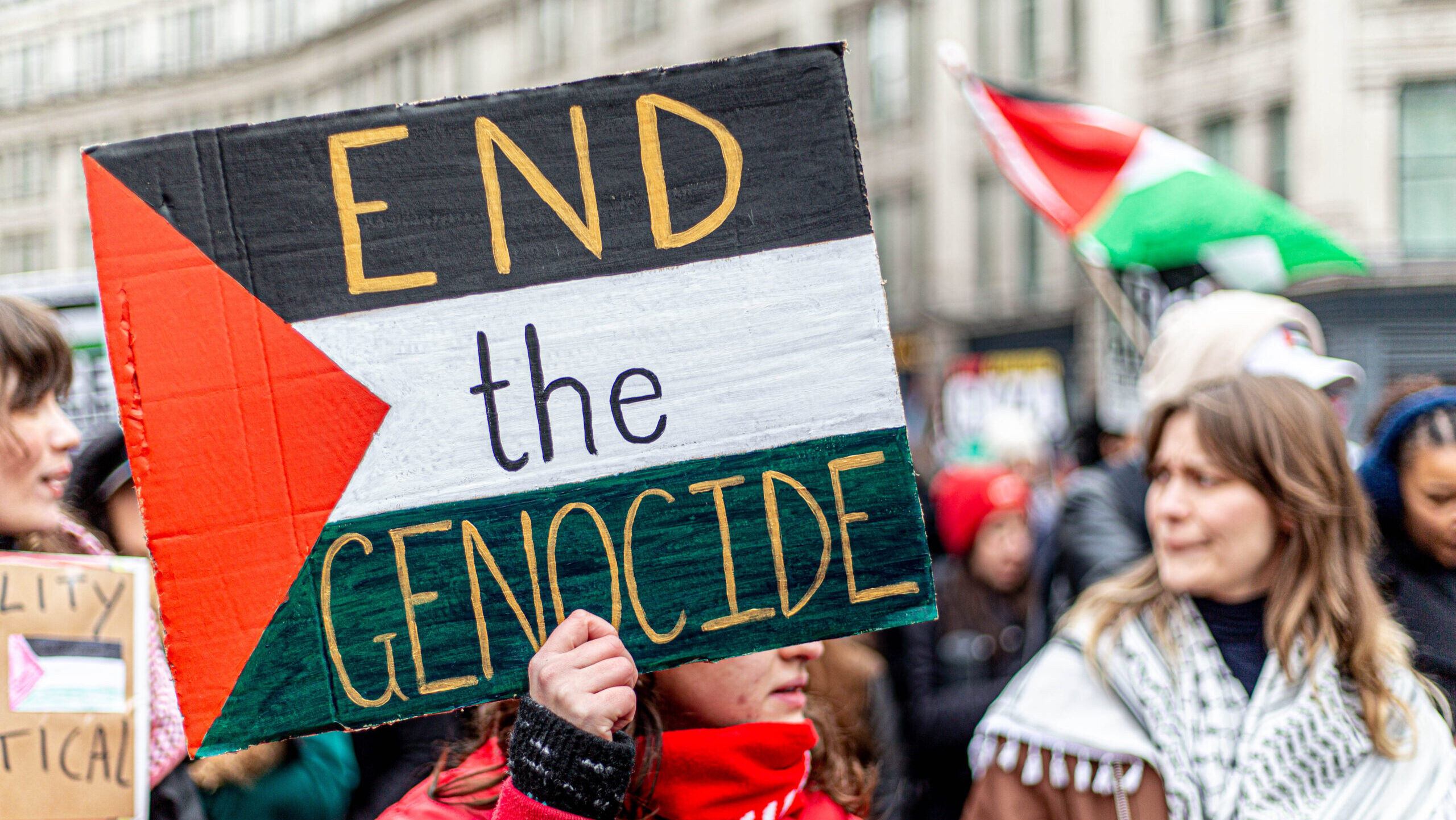Palestinians Worldwide Commemorate International Day of Solidarity
The International Day of Solidarity with the Palestinian People highlights a 1947 UN resolution dividing the Levant, sparking decades of conflict
On November 29, the world marks the International Day of Solidarity with the Palestinian People, coinciding with the anniversary of Resolution 181, the 1947 decision to partition Palestine into separate Jewish and Arab states. While intended to establish peace, the resolution became the catalyst for decades of conflict, displacement, and the enduring struggle for Palestinian statehood.
This year’s observance is overshadowed by escalating violence in the West Bank and Gaza. UN Secretary-General António Guterres recently described Gaza as enduring a “humanitarian catastrophe.” The 2023 conflict alone has displaced nearly 1.7 million people in Gaza.
In the Holy City of Bethlehem
Bethlehem is not just a political and cultural center; it’s also a hub for religious significance, as it is the birthplace of Jesus Christ. This gives the city a unique status, drawing religious pilgrims and international attention. The city’s population is primarily Palestinian, with a mix of Christian and Muslim communities, and it plays an essential role in the local economy, driven by tourism, agriculture, and services.
It’s an honor to be Palestinian both here and abroad. We maintain networks between us and our families worldwide, keeping our traditions alive despite geographical differences.
“It’s an honor to be Palestinian both here and abroad. We maintain networks between us and our families worldwide, keeping our traditions alive despite geographical differences,” Basil Abuaita, operational manager of the family-owned hotel in Bethlehem, told The Media Line. “I am Christian, but there are no differences of religion that stand between us; we are sons of the same nation.”
Abuaita, like his family, is 27 years old and was born and raised in the holy city of Bethlehem. There, they opened a family hotel, which, according to him, became a place of pride and privilege due to the city’s religious importance. However, given the war and its impact on domestic and foreign tourism, it also turned out to be an economic challenge.
My family and I will stay here despite the obstacles posed by the lack of tourism, but many people here have already left to go abroad. The situation is very bad, and seeing our people emigrating elsewhere and abandoning their lives is painful. This is a tragedy for the entire nation.
“My family and I will stay here despite the obstacles posed by the lack of tourism, but many people here have already left to go abroad. The situation is very bad, and seeing our people emigrating elsewhere and abandoning their lives is painful. This is a tragedy for the entire nation.”
According to the Palestinian Central Bureau of Statistics, the population of Palestinians living in the West Bank is estimated to be over 3.2 million in 2024, with a large portion residing in urban areas. The population has been steadily growing in Bethlehem, a key city in the southern West Bank. As of recent projections, Bethlehem city houses around 32,000 people, while the Bethlehem Governorate, including nearby towns and refugee camps, totals over 254,000 residents.
“We constantly think about those suffering in Gaza,” he added. “They have been displaced multiple times over a year, and we pray for them every day. As Palestinians, we are all connected and sympathize with those of us who are in a terrible situation.
The broader Bethlehem Governorate has seen growth in its population due to both natural increases and the return of the Palestinian diaspora. Many Bethlehem residents, especially those living in refugee camps like Aida, face significant challenges, including high unemployment rates, limited access to resources, and restrictions on movement.
We try to help each other through money donations and chains of support, especially those living abroad, to maintain a tight connection with their homeland and help financially from there.
“We try to help each other through money donations and chains of support, especially those living abroad, to maintain a tight connection with their homeland and help financially from there.”
Abuaita pointed out that Palestinian people try to overcome tragedies and be hopeful no matter what about the future.
“We value life and our roots,” he noted. “We want to keep sharing that with the world. After this war, we hope to host visitors back in our land to show them the essence of our people.”
This holiday season, give to:
Truth and understanding
The Media Line's intrepid correspondents are in Israel, Gaza, Lebanon, Syria and Pakistan providing first-person reporting.
They all said they cover it.
We see it.
We report with just one agenda: the truth.
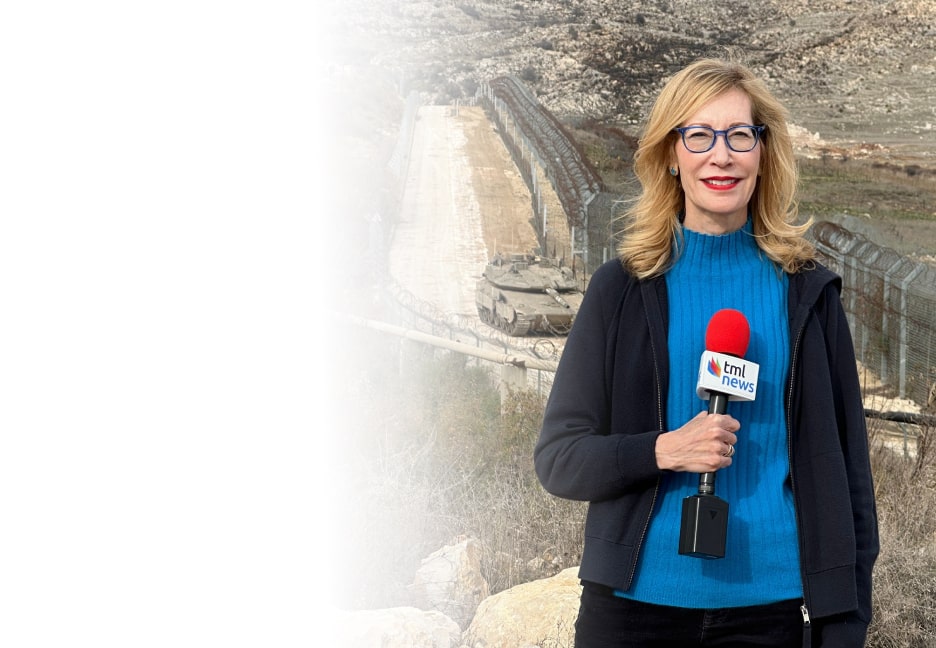
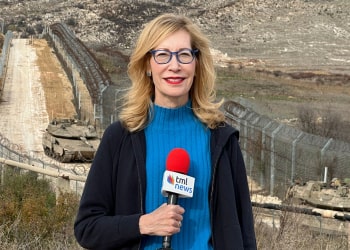
Internal Displacement and Suffering in Gaza
Osama Hussein, a 28-year-old from Khan Yunis, Gaza, told The Media Line he considers himself “the example of different stories of internal displacements and suffering.”
His mission is to present his art pieces abroad and show what people in Gaza endure and experience every day.
“My work presents part of the Palestinian experience amid these hard times. We are at war, and my pieces show feelings from sadness and loss to a tiny sign of hope. Overall, all Palestinians have been suffering, from the West Bank to the refugee camps abroad. We are the symbol of resilience despite any border between us. He concluded that our symbols, such as al Kufia, food, and folklore, keep us alive anywhere.”
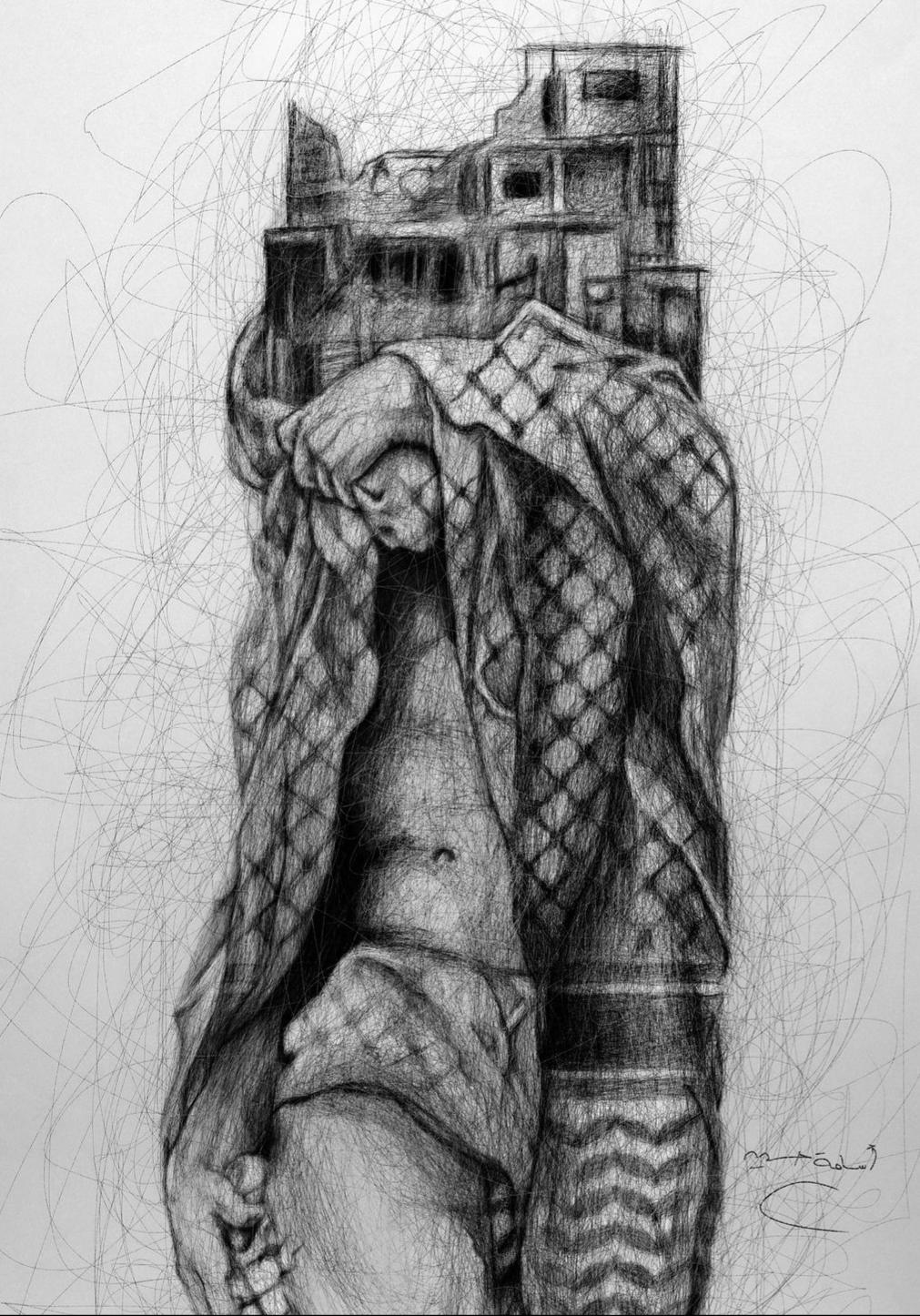
Art by Gazan artist Osama Hussein. (Courtesy)
Hussein explained that his family was originally from Yaffa. However, the Nakba—Israel’s forced displacement of approximately 700,000 Palestinians in 1948—left the family internally displaced and forced to relocate to Gaza, which became the place of his childhood memories.
However, the enclave now symbolizes a place of tragedy, as the ongoing conflict that began in October 2023 has had catastrophic effects on the population. Thousands have been killed, with nearly 39,000 Palestinians reported dead as of early 2024, according to reports of the Palestinian Central Bureau of Statistics.
“I just have memories of all my life in Gaza. We were living a happy life with my family before the war. I had my tiny studio where I did my art,” he explained.
In addition to the loss of life, significant damage to infrastructure and housing has been reported, with 150,000 housing units destroyed and 200,000 left uninhabitable, according to UNESCWA.
I wanted to try to live a decent life here, but my studio got destroyed amid the war, and now we live in tents. We have no money left and are just hoping this will stop.
“I wanted to try to live a decent life here, but my studio got destroyed amid the war, and now we live in tents. We have no money left and are just hoping this will stop.”
He also noted the war took away many of his close people, while others he knew managed to escape at the beginning of the conflict through Egypt, adding, “Aside from my sister, who is in Turkey, most of my family is still here.”
Although the war changed everything for all of us, we are going through a second Nakba.
“Although the war changed everything for all of us, we are going through a second Nakba.”
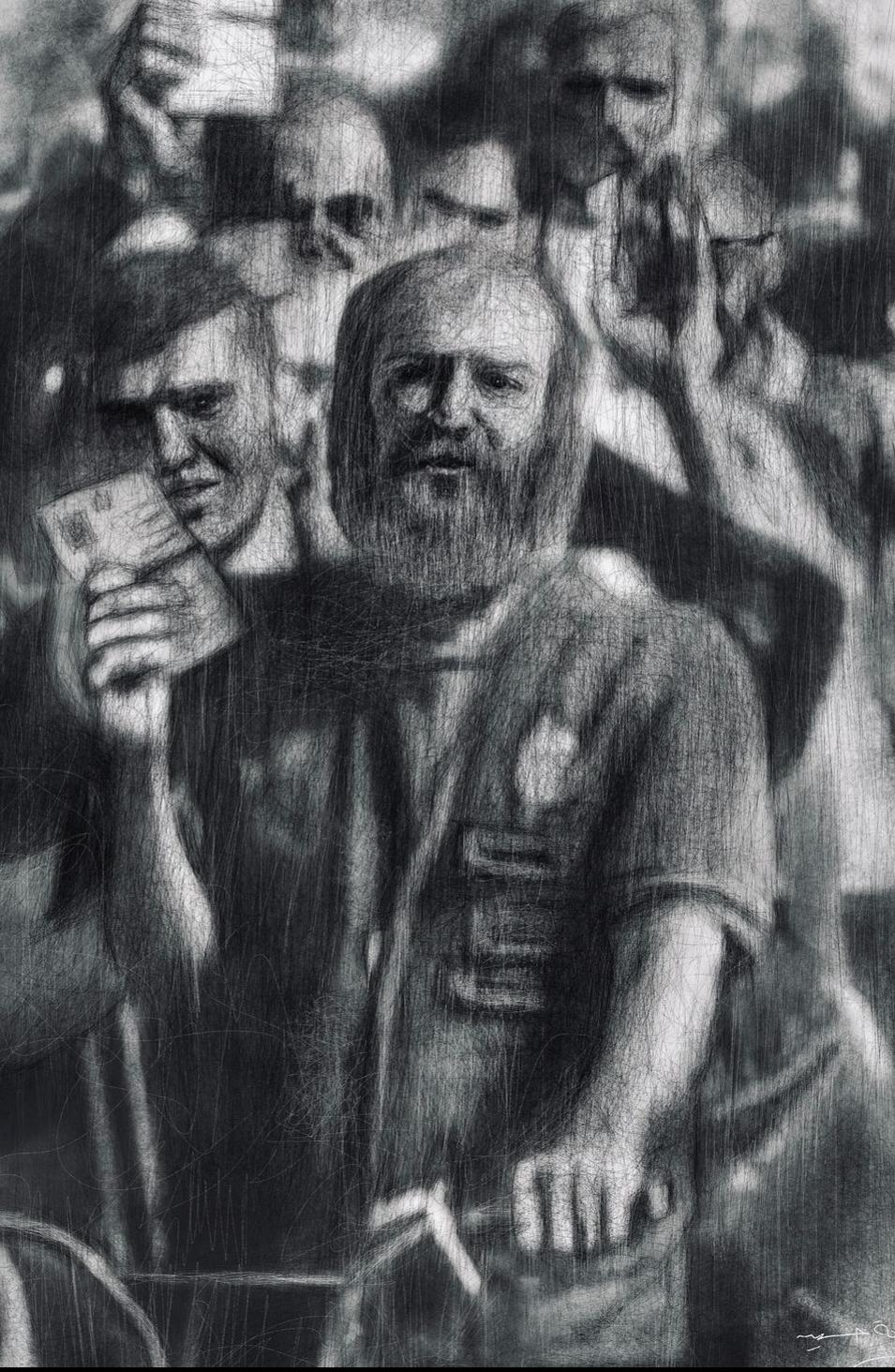
Art by Gazan artist Osama Hussein. (Courtesy)
Today, more than 5 million registered Palestinian refugees remain scattered across the Middle East, many in overcrowded camps, still waiting for the right of return adopted in UN Resolution 194.
According to the Palestinian Central Bureau of Statistics, before the 2023 conflict in Gaza, the population was estimated at around 2.2 million Palestinians living in the Gaza Strip. This densely populated region is characterized by its young demographic, with nearly half its residents under 18 and about 68% under 30. Most of the population (approximately 66%) were refugees displaced in 1948.
There is nothing left for us here.
Hussein tried to raise funds through GoFundMe, but it was impossible due to his and his family’s lack of funds. He told The Media Line, “There is nothing left for us here.”
“This is why I dream of going abroad. Palestinian people have always shown strength throughout all wars, and this time as well, we will survive this somehow.”
A ‘Complex Duality’ in Italy
According to the Palestinian Central Bureau of Statistics, as of 2024, the global Palestinian diaspora is estimated to number 7.4 million people, with the majority living in Arab countries. Italy hosts around 40,000 to 50,000 Palestinians, concentrated mainly in cities like Rome and Milan.
I will always feel a complex ‘duality.’ I don’t know which side I belong to more, either the Palestinian-Jordanian or Italian.
“I will always feel a complex ‘duality,’” Jasmine Dabash, a 22-year-old university student living in Venice, told The Media Line. “I don’t know which side I belong to more, either the Palestinian-Jordanian or Italian.”
“We always tried to balance both cultures by going to school in Italy, speaking the local language and building relationships, while at home fully living our culture through traditional food, language, and collective memories of our family members.”
Dabash recalled her family’s stories through the memories of her grandparents. Both came from Palestinian roots, but after the Nakba, they relocated to several Arab countries and later to Jordan, where they raised their children.
When I visited Jordan as a kid, people there considered me Palestinian, and for my broken Arabic at that time, even Italian. Meanwhile, in Italy, we were perceived as foreigners because of our different roots despite speaking the language perfectly and having lived there most of our lives. I still struggle to define myself for this reason. Still, I am proud to associate myself with both cultures.
“When I visited Jordan as a kid, people there considered me Palestinian, and for my broken Arabic at that time, even Italian. Meanwhile, in Italy, we were perceived as foreigners because of our different roots despite speaking the language perfectly and having lived there most of our lives. I still struggle to define myself for this reason. Still, I am proud to associate myself with both cultures.”
Jordan hosts the largest Palestinian population, with around 2.2 million, many of whom are descendants of refugees from the 1948 Nakba. Lebanon and Syria also have substantial communities, with approximately 450,000 and 500,000 Palestinians, respectively, although the war in Syria has displaced many refugees.
She pointed out that she will keep teaching her children the importance of being aware of their roots and past without passing over generational trauma.
“As a Palestinian in diaspora, I wish my people lived in peace. I would love to erase all the hatred and disrespect from both sides of this conflict. This comes from a privileged standpoint of a person living in Italy who has never heard a bomb alarm before.”
“For this reason, I will always feel clueless because I cannot fully understand what my people experience, and I can’t change things. Despite that, my children one day will be aware of the tragic circumstances unfolding in Palestine and the importance of advocating against any form of violence and hate.”
